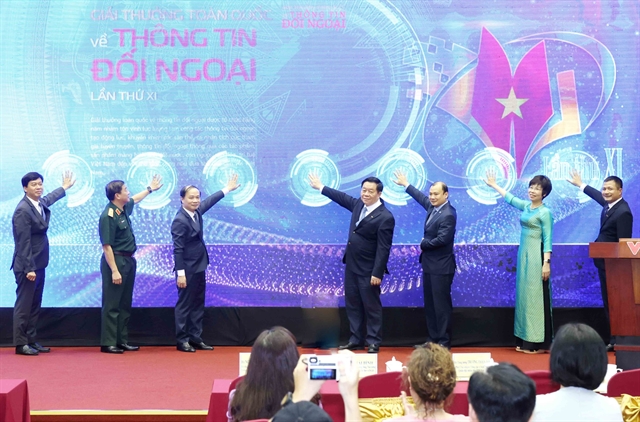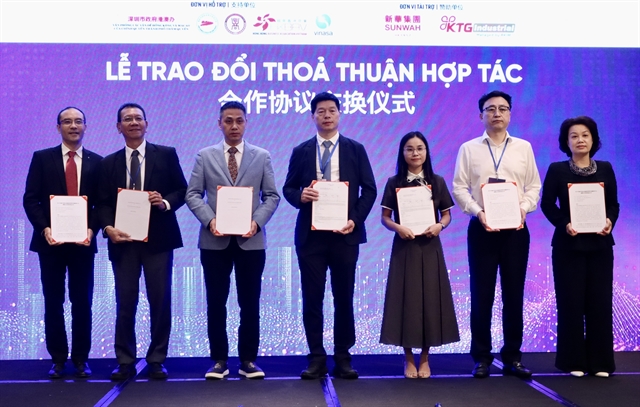 Opinion
Opinion

 |
| Việt Nam's Ambassador to Sweden Trần Văn Tuấn. VNA/VNS Photo |
STOCKHOLM – Prime Minister Phạm Minh Chính’s official visit to Sweden from June 11 to 13 is expected to inject fresh momentum and open up new avenues for breakthrough cooperation between Việt Nam and Sweden across multiple fields, stated Vietnamese Ambassador to Sweden Trần Văn Tuấn.
Talking to the Vietnam News Agency, the ambassador noted that it is the highest-level visit by a Vietnamese leader to Sweden since 2019, and also marks PM Chính’s first visit to a Nordic country. It is a major political and diplomatic event with strategic importance for bilateral relations.
According to the diplomat, the relationship between Việt Nam and Sweden has continued to thrive since the two countries celebrated 55 years of their diplomatic ties in September 2024. High-level exchanges have been maintained, including the visit by Vice President Võ Thị Ánh Xuân to Sweden and the trips to Việt Nam by representatives of the Swedish Parliament’s Foreign Affairs Committee and Minister for International Development Cooperation and Foreign Trade Benjamin Dousa in March and May 2025, respectively.
Economic relations have also shown encouraging signs. The Department of Vietnam Customs reported that bilateral trade reached US$580.44 million in the first four months of this year. Việt Nam's exports to Sweden rose by 14.2 per cent year-on-year to $403.93 million while imports surged 55.3%, totalling $176.51 million.
On the investment front, Swedish company Syre has signed a memorandum of understanding with Bình Định Province to build a high-tech polyester recycling plant, with an estimated investment ranging from $700 million to $1 billion. If realised, it would become Sweden’s largest investment project in Việt Nam to date.
Tuấn noted that Sweden was the first Western country to establish diplomatic ties with Việt Nam, in 1969, and also one of the countries with the strongest anti-war movements in support of Việt Nam. Between the early 1970s and 2013, the European nation provided $3.46 billion in non-refundable aid, helping Việt Nam with post-war reconstruction, poverty alleviation, development, and integration into the world. Since 2013, their relationship has transitioned into an equal and mutually beneficial partnership.
Despite progress, he described such figures as modest given the long-standing friendship and substantial cooperation potential. In a rapidly changing international landscape, he stressed the importance of making new strides in bilateral relations to meet the development needs of both countries.
Talking about the agenda of the visit, the ambassador said that PM Chính is set to hold talks with high-ranking leaders of Sweden, meet with some large companies operating in Việt Nam, and engage with scholars and experts to share Việt Nam's major policies. He will also meet the Vietnamese community in Sweden.
Alongside formal activities, the PM will take part in several people-to-people diplomacy activities to honour Swedish individuals and organisations who supported Việt Nam in the past and have contributed to the friendship and multifaceted cooperation for more than five decades.
At the meetings with Swedish leaders, the two sides will focus on deepening collaboration in key areas such as politics and diplomacy, trade and investment, science and technology, innovation, digital transformation, education and training, sustainable development, tourism, and people-to-people exchanges. Discussions will also cover regional and global issues of mutual concern.
A central aim of the visit is to demonstrate both sides' determination to elevate the bilateral relationship to a higher level, aligned with the countries’ priorities and advantages.
Several agreements between Vietnamese and Swedish ministries, agencies, and enterprises are expected to be signed during the trip, according to Tuấn.
Looking forward, he held that cooperation in science, technology, and innovation will also become a pillar of the bilateral partnership. Sweden is widely recognised for its strengths in these areas, consistently ranking second in the Global Innovation Index list. It invests approximately 3.6 per cent of its GDP in research and development, well above the European Union average of 2.2 per cent (as of 2023).
Việt Nam, for its part, offers strong advantages in human resources, manufacturing capacity, market scale, and development policy orientation. The Politburo’s Resolution No 57, issued in December 2024, on making breakthroughs in science and technology development, innovation, and digital transformation shows the country’s high-level political commitment to promoting these fields to quickly advance in the digital age and the global economy, he underlined.
The ambassador stressed that a new cooperation framework in science, technology, and innovation will enable the two countries to leverage their respective strengths for common development in the new era.
Promising areas for collaboration include digital transformation, infrastructure development, software outsourcing, waste recycling, renewable energy, semiconductors, healthcare services, pharmaceuticals, and high-quality workforce training. Many businesses of both countries operating in these sectors are keen to expand cooperation in the coming time, he added. VNA/VNS





)



 The Fourth Hong Kong Science Fair will take place from 28 to 29 June at the Hong Kong Convention and Exhibition Centre. Online registration is now open for free admission.)